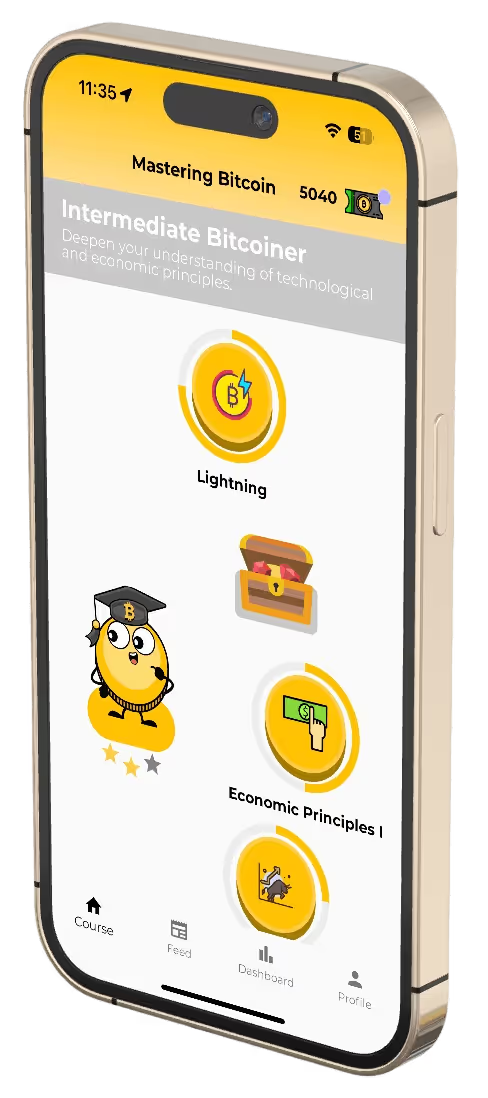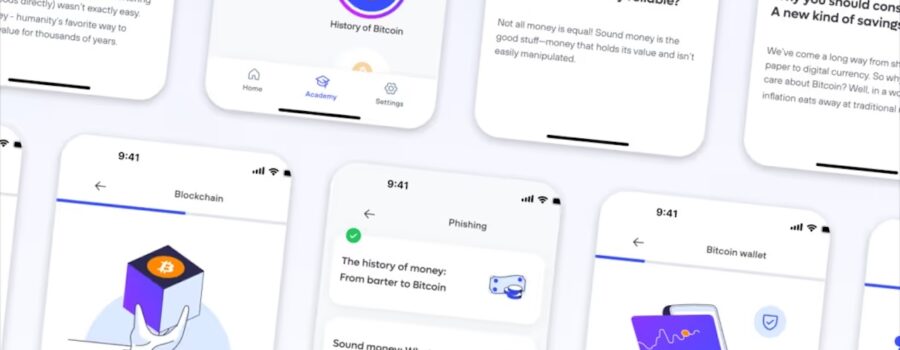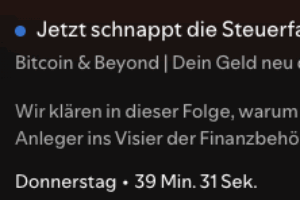Complex topic, limited attention
Bitcoin requires a lot of explanation. Anyone dealing with wallets, private keys or on-chain transactions for the first time quickly encounters technical jargon, security issues and contradictory sources. Traditional training formats such as long webinars, PDFs and one-hour videos overwhelm many users exactly where they need guidance: in small, concrete application moments. For companies in the Bitcoin and FinTech environment, this creates a twofold problem: a need to educate customers and a need to train employees, with limited time and attention.

Why microlearning works
Microlearning adressiert diese Lücke, indem es Wissen konsequent in wenige Minuten lange, in sich geschlossene Einheiten schneidet. Jede Lerneinheit beantwortet eine präzise Frage („Was ist ein Seed-Phrase-Backup?“) oder trainiert eine konkrete Handlung („Wie überprüfe ich eine Empfangsadresse?“). Drei Prinzipien machen den Unterschied: Erstens reduziert die Portionierung die kognitive Last, weil Lernende nicht mehr gleichzeitig „alles“ verstehen müssen. Zweitens ermöglicht der modulare Aufbau Wiederholung und zeitliche Verteilung; Kernthemen tauchen in variierter Form wieder auf und festigen sich. Drittens fördert aktives Abrufen, etwa durch kurze Quizfragen, den Transfer in die Praxis. Entscheidend ist nicht die schiere Menge an Informationen, sondern die Qualität der Berührungspunkte: kurz, fokussiert und wiederkehrend.
This stands in contrast to the “one-and-done” marathon session. Instead of linear content overload, microlearning builds adaptive learning paths that lower cognitive load, repeat core concepts, and reinforce knowledge through retrieval. Decades of research back this up through the spacing and retrieval effects.
And companies are noticing. According to LinkedIn’s 2024 Workplace Learning Report, nearly half of L&D teams plan to introduce micro- or nano-learning programs. Microlearning is both scientifically proven and organizationally practical—exactly what’s needed in fields like Bitcoin, where concepts build on one another and mistakes have real consequences.
Gamified learning in practice: Simple Bitcoin App
App-Learning operates several learning apps that follow a common microlearning and gamification framework. The didactic core is the same everywhere: short, self-contained modules, adaptive learning paths, regular knowledge checks and clearly visible progress. This architecture makes it possible to deepen content on a domain-specific basis, update it quickly and embed it seamlessly into existing environments.
Take the Simple Bitcoin App. It shows how microlearning plays out in everyday practice. Users move through short, coordinated lessons covering fundamentals, security, and real-world use cases. Progress bars, certificates, and quick quizzes keep things engaging and help learners see their growth instantly. The gamification isn’t just for fun—it drives attention and builds momentum. Finish one two-minute task, and you’re far more likely to start the next. Over time, that creates a real learning habit.
“We realized that success isn’t about how long you study, but how often. Two minutes of clarity at the right moment are worth more than an hour of overload,” says Yannic Fraebel.
The focus stays deliberately on Bitcoin. Rather than offering a little bit of everything, the app goes deep where it matters—teaching the economic basics, the logic of fees, and the practical skills that reduce support requests and prevent user mistakes.

What companies should do now
App-Learning operates several learning apps that follow a common microlearning and gamification framework. The didactic core is the same everywhere: short, self-contained modules, adaptive learning paths, regular knowledge checks and clearly visible progress. This architecture makes it possible to deepen content on a domain-specific basis, update it quickly and embed it seamlessly into existing environments.
This approach has additional advantages for companies in the Bitcoin and FinTech environment. Firstly, microlearning can be flexibly integrated into existing channels, such as an app, a help center, onboarding routes or internal training platforms. Secondly, maintenance is scalable: modules can be updated, expanded or varied to suit specific industries without having to rebuild the entire system. Thirdly, the didactic framework creates trust because it systematically prevents typical errors, from backup routines to incorrect transfers. Anyone with responsibility for sensitive topics needs not only knowledge, but also a learning format that works in everyday life.

Especially in times when attention is at a premium, what counts is the ability to create an aha moment in two to three minutes and to repeat this aha moment regularly. This is how competence grows gradually, comprehensibly and measurably.
Further information: A detailed case study on the methodology, structure and results can be found on the App-Learning website. If you want to evaluate microlearning for customer training or employee qualification in the context of Bitcoin, you can gain insights into the didactic architecture and implementation there.
-
- To the app: Simple Bitcoin App
- Contact us & Case Study: App-Learning





